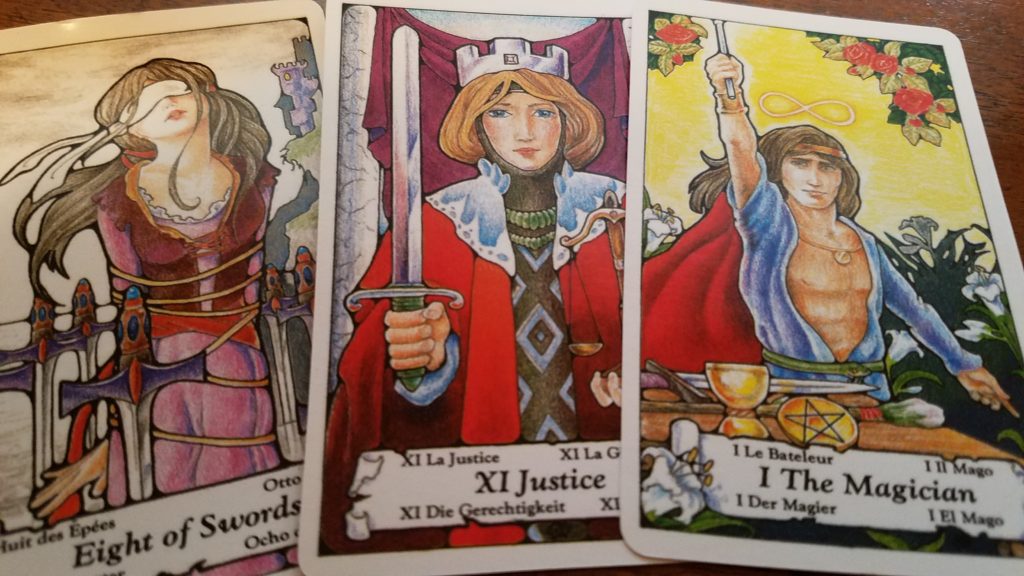Why am I interested in tarot? These cards have been around since the mid 1500s. They were used as playing cards and like our deck, they had suits.
But aren’t they used for divination? That is certainly what I was most familiar with them as. Certainly, their use for that purpose is documented from about 1540. Manuscripts from shortly after document a system for laying out the cards. According to Wikipedia “Giacomo Cassanova wrote in his diary that in 1765 his Russian mistress frequently used a deck of playing cards for divination
Antoine Court de Gébelin, a French-born Protestant pastor and Freemason, published a dissertation on the origins of the symbolism in the Tarot in volume VIII of his unfinished fifteen volumes of the Le Monde Primitif. De Gébelin, who never knew the Tarot as the thought the Tarot represented Egyptian theology including Isis and Osiris. For example, he thought the card he knew as the Papesse and known today as the high priestess represented Isis.
The 1700s saw a rebirth of the circus.
I say rebirth because the kind of performances one thinks of have a long long history. The Egyptians had a tradition of acrobatics and juggling and they passed that onto the Greeks and the Romans. And these itinerant performers, called funanbuli – literally rope dancers – traveled throughout the expansive empire. During the middle ages, all the fairs boasted performers: jugglers and the like.
But all of this ceased in Great Britain and then in the new country with the Puritans who thought performances of all kinds were works of the Devil. Theaters in New England were forbidden right up until the late 1700’s. But in Europe traveling performers continued. In 1768 Sergeant-Major Philip Astley began exhibiing his equestrian prowess outside of London. Other equestrian acts followed. He called it a ‘circus’, the Latin word for circle because the riders rode around a ring. He struck gold. In 1779 he built a riding school. His ampitheater became the model for circuses everywhere.
At first these circuses were primarily exhibitions of trick riding but gradually acrobats, jugglers, rope dancers – tightrope walkers – were added. Family dynasties of circus performers were born.
A pupil of his, John Bill Ricketts, brought the circus to America. He first began a riding school in Philadelphia in 1792. It was wildly successful; people were hungry for entertainment. By 1793 he had begun bringing over European performers – including acrobats, clowns and rope dancers.
Other entrepreneurs followed suit, including a farmer from Brewster, New York , who found an elephant somewhere and brought it on tour. The display of exotic animals had been popular as early as the Bronze Age but this was a first in the U.S. Animal acts, primarily using dogs and pigs, followed.
Since tarot had been popular in Europe for centuries and had been used almost as long for divination, I wonder if some of these early circus performers didn’t bring the cards with them. Tarot would have predated the stereotypical circus fortune teller with the glass ball.
Now, with our jaded sensibilities, it is hard to imagine how exotic and wonderful these early circuses appeared. Farmers knew horses but not ones who allowed riders to stand on their backs. Pigs and dogs, animals they saw every day, performed the most amazing tricks. And any fortune telling would have seemed truly magical.

